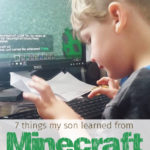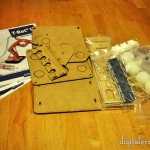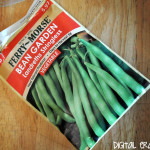This post about Very Last First Time Activities may contain affiliate links.
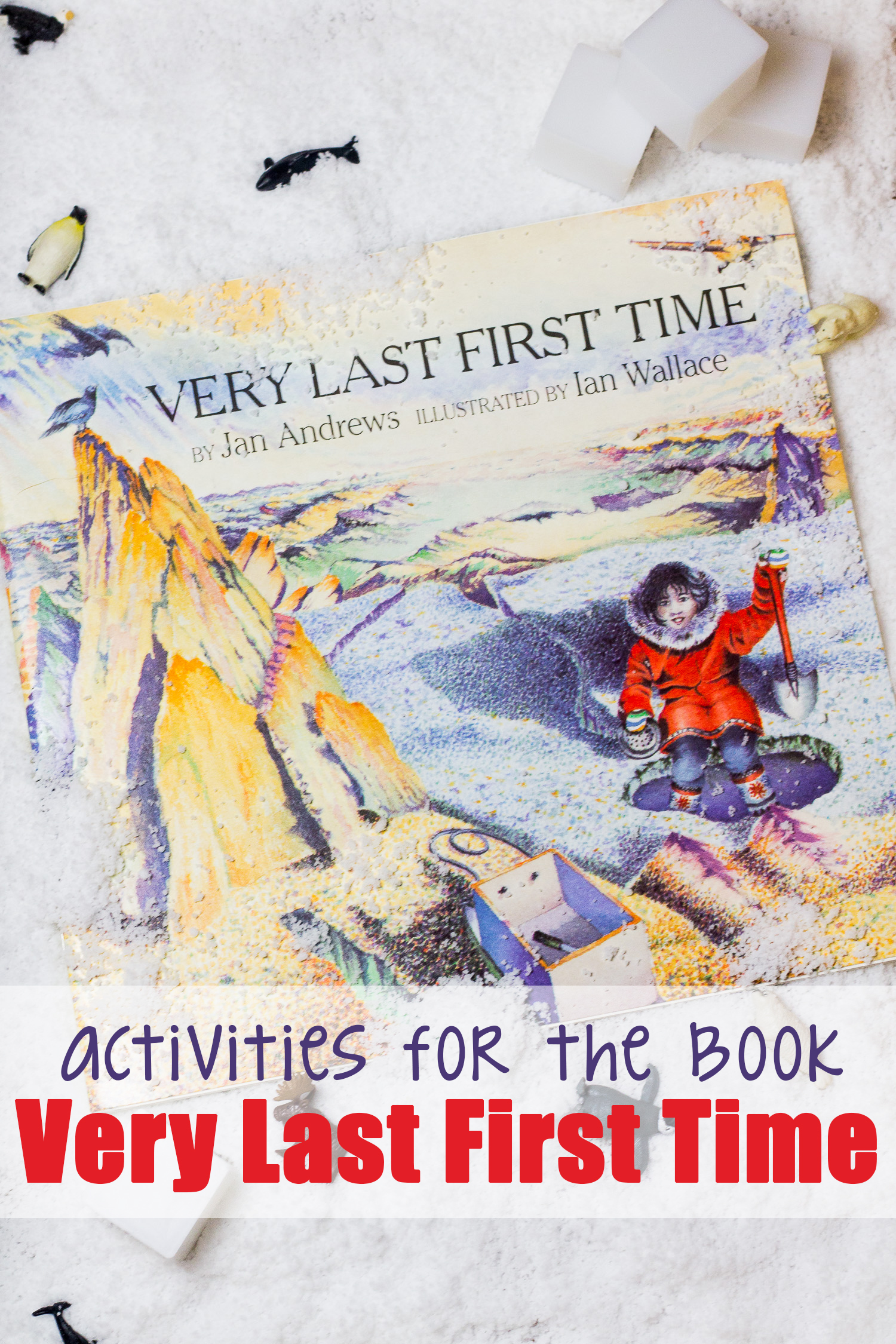
We all have Very Last First Times in our lives. A very last first day of school, a very last first time doing the monkey bars all by yourself, a very last first thing that you’re doing all on your own. For the main character in Very Last First Time, it is the very last first time she’ll ever walk on the seabed by herself. After that very last first time, she will have already done it before. It won’t be a first time anymore.
The book Very Last First Time is so packed with things you can explore and learn: amazing information about Inuit culture, how mussels are gathered, and what an arctic tundra is like. It’s also packed with information about family relationships. It discusses how to handle fear and important situations. Of course, it is also about growing up and tackling new milestones. Maybe you’re enjoying the book with your child for fun. Or, perhaps you’re rowing it as a part of your Five in a Row curriculum. You might even be tackling the book as part of a unit study. Regardless, there are plenty of fun Very Last First Time activities to do with this book!
We had so many ideas for our time studying this book, that we definitely didn’t tackle it all. Today, I’m sharing the highlights of what we did, plus some other ideas for you to try!
Morning Circle Activities
We love to start our day off on a good note. This includes a little bit of movement, helping us get the wiggles out before we start. We also like to keep some consistency, regardless of the book we happen to be studying at the time. For movement, we often include a little bit of yoga or we act out a relevant poem.
Poetry In Motion
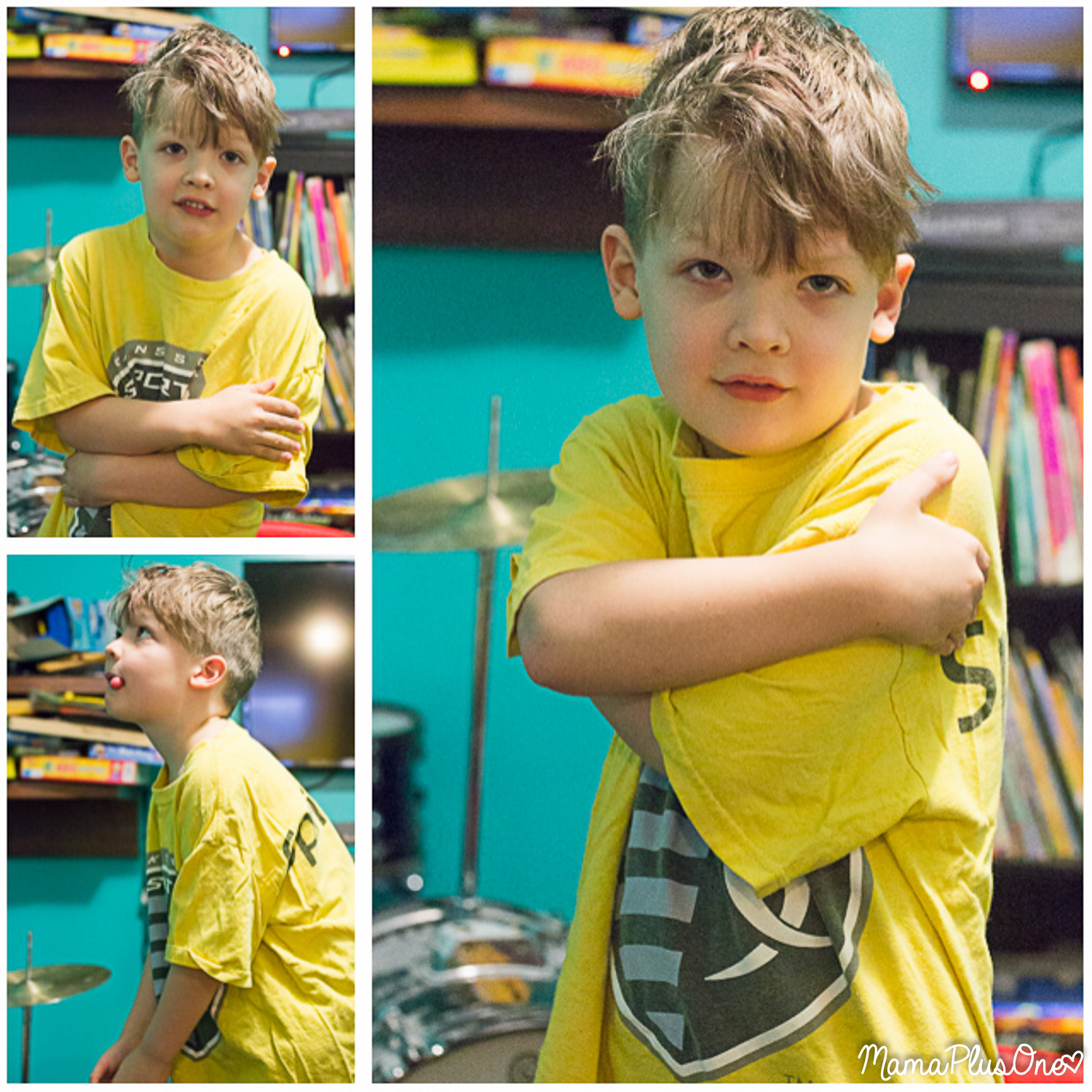
We decided to act out a fun poem from a book my mother gifted me. I’ve looked everywhere and cannot seem to find a copy in print, but it is from the book Circle Time Activities for Young Children by Deya Brashears and Sharron Werlin Krull.
The text of the poem goes like this:
You are in a cold room.
There is no fire or heat.
You want a jacket.
You look for one.
You can’t find a coat.
You are freezing.You are in a warm room.
The windows are closed and locked.
The heater is on.
It cannot be turned off.
You are very warm and are sweating.
It is daytime.
The sun will not stop shining.
When reading this poem, I encouraged my son to act out what the words meant to him. I asked him to express the feelings that he heard in the words I was saying. I selected this poem specifically because the book’s location, Ungava Bay, is significantly colder than our area during the winter. A poem emphasizing cold seems like the perfect fit! When children listen to poetry and then act out what they are hearing, they are not just hearing it, but instead also understanding it. Acting out poetry is a good way to teach basic listening skills. It also enforces acting skills and gets your child moving before you start on activities that require a still body.
Weather Charting
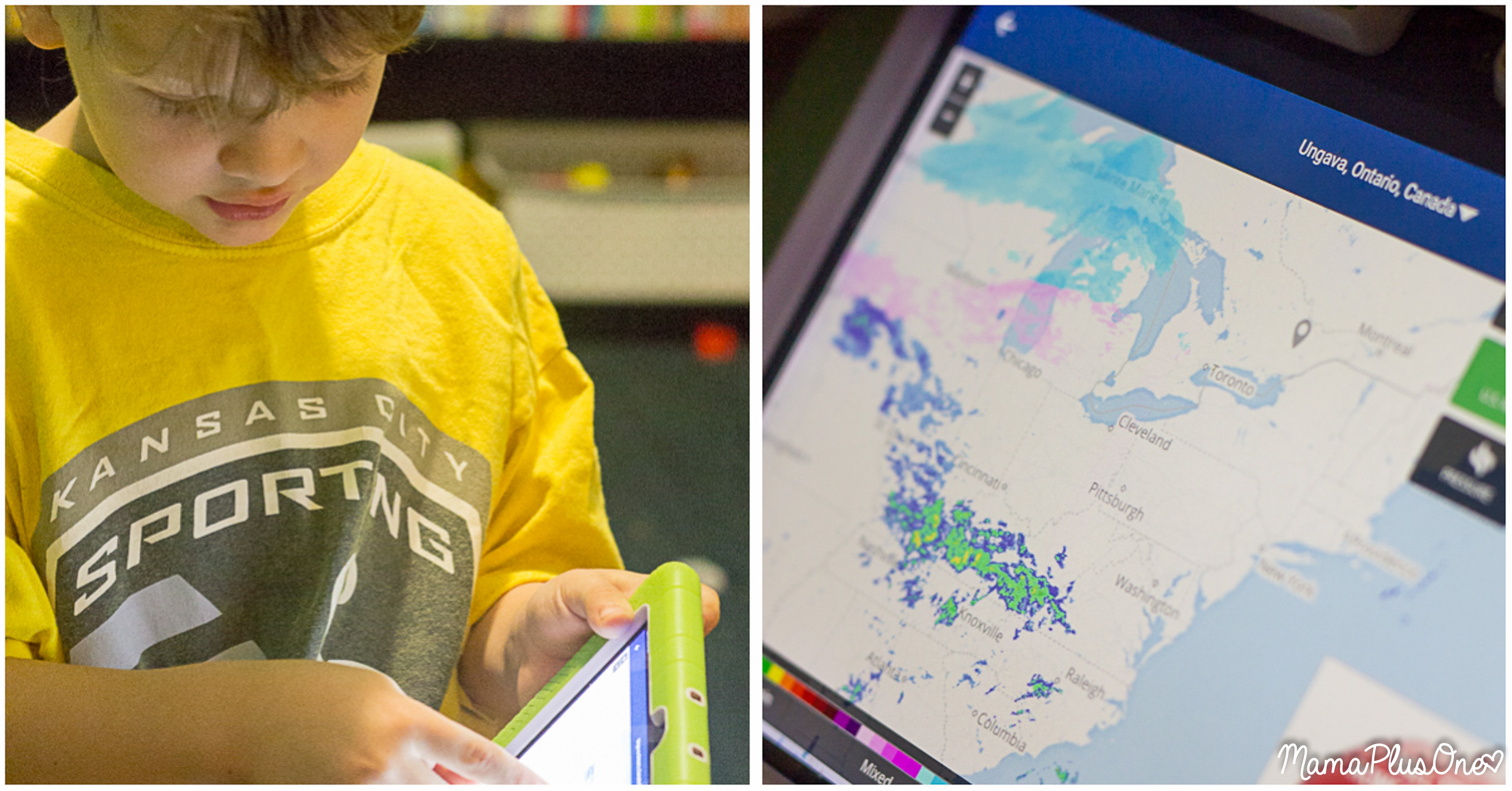
My kiddo loves the weather, and I thought it would be very interesting for us to locate Ungava Bay on his weather app on his Amazon Fire. We really like Weatherbug, which is a free app, for checking the weather, but any weather app that allows you to choose a city that is different than the one you’re currently in will work for this activity. Honestly, this has been one of his favorite Very Last First Time activities even after we’ve finished the book.
Each morning, I had him look at the weather here and we discussed whether the temperature was hot, cold, or somewhere in between. We also talked about what kind of clothing would be appropriate if we were to go outside that day. Then, we checked the weather in Ungava Bay. Each day, it was fun to discuss whether it was colder or warmer there than in our own town. It gave us a chance to take note of whether it was storming, sunny, or cloudy there also. These seasonal paper dolls from Education.com are very helpful in talking about dressing suitably for the weather when talking about the temperatures here and there.
On some days, it was warmer than our own climate, and on others, it was much colder. Because we live in Kansas City, it isn’t unusual for it to be 80 and stormy early in the week, and 30 and snowy later in the same week during the springtime, which meant a really wide variety of temperatures, even though Ungava Bay stayed relatively steady throughout.
Social Studies
There are so many interesting Social Studies aspects to Very Last First Time. Inuit culture, geography, and family relationships are all essential to our study of the book.
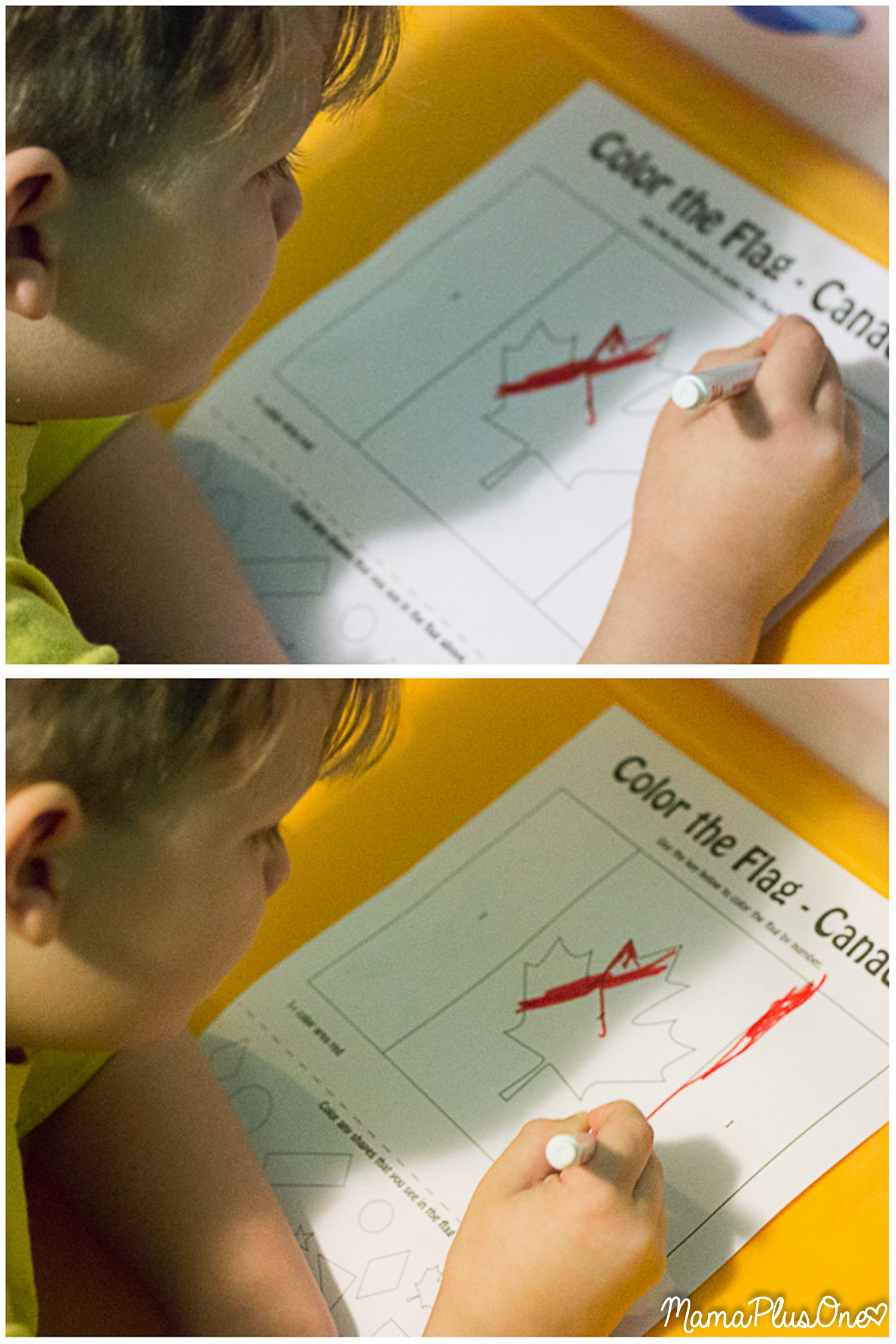
Geography
Each day, we took the time to locate Ungava Bay on a map. The first day, I gave him assistance in locating it. Each day after, I let him do the searching for it and delayed helping him to find it. By the end of the week, he was able to locate it by himself. During the week, we also took the time to find Ungava Bay on Google Maps. We enjoyed exploring the town using the map service. Seeing it firsthand helped us see what was similar (and what was different) about Ungava Bay and our own town.
From looking at the map and looking at the location on Google Maps, we were able to reveal that Ungava is a tundra. While Ungava is actually near the Atlantic Ocean, it’s so cold that it is often considered to be in the Arctic, meaning we were able to work in a lot of information about the Arctic, as well.
Because Ungava Bay is in Canada, we discussed and learned about Canada. We decided to do a fun coloring page of the Canadian Flag. My kiddo was so thrilled to find out that the only color he needed to color the flag was red– his favorite!
Inuit Culture
The book has a very heavy emphasis on Inuit life in modern times. Part of the book is all about how the Inuit collect mussels from the seabed, walking on the sea floor when the tide goes out.
We found the Native American Pocket Book to be a great activity resource. This book has plenty of activities, cutouts, and games. It has more than enough for you to create a lap book on Inuit culture if you’d like. Alternately, you can use the projects inside as stand-alone activities. The book covers a wide variety of Native American cultures. That said, I found the Inuit section to be quite substantial. You can always save the other sections as a resource for later units and studies.
The blog Spark and All has a really fun Igloo project from when her family did Very Last First Time activities during their Five in a Row study of the book. It is a really fun project to use as a launchpad for discussing Igloos in Inuit culture.
This video of Inuit Throat Singing is interesting– have you ever heard Inuit Throat singing before? We hadn’t, so this was informative and eye-opening. We attempted to do it ourselves but failed miserably.
Math
One topic covered in Very Last First Time was ordinal numbers. Ordinal numbers are the ones that denote order, like first, second, third, last…. You can tell by the title that first and last are emphasized pretty heavily, so we decided to take time to really discuss ordinal numbers.
One way we practiced ordinal numbers was by lining up our plastic bear counters. I encouraged my son to tell me which was the first, the last, and others in the middle using ordinal numbering.
We also did a couple of worksheets for extra practice. In particular, this one and this one from Education.com are great choices.
Science
My son’s favorite subject is science, so many of the Very Last First Time activities we did focused on science. We had a blast going down several of the scientific rabbit holes that this book presented!
Tides
We did a lot of discussions on tides this week, but the highlight was definitely this video from BBC on Youtube. It shows the process of mussel collecting exactly as it is described in the book. If your children are interested in knowing the exact process by seeing it done, this is a great video to show. It is important to note that there are some scenes where those in the video discuss knowing friends who didn’t make it out in time. If your children are sensitive to hearing those things, you may want to pre-screen the video before showing them.
The Arctic Biome
My son was very interested in finding out how Arctic animals stay warm. We took it as an opportunity to do an experiment. First, we watched a video about how animals stay warm using hair, blubber, and other built-in tools. This video does a great job of explaining how animals stay warm using their hair, and it also touches on how blubber is a way other animals stay warm.
Blubber Experiment
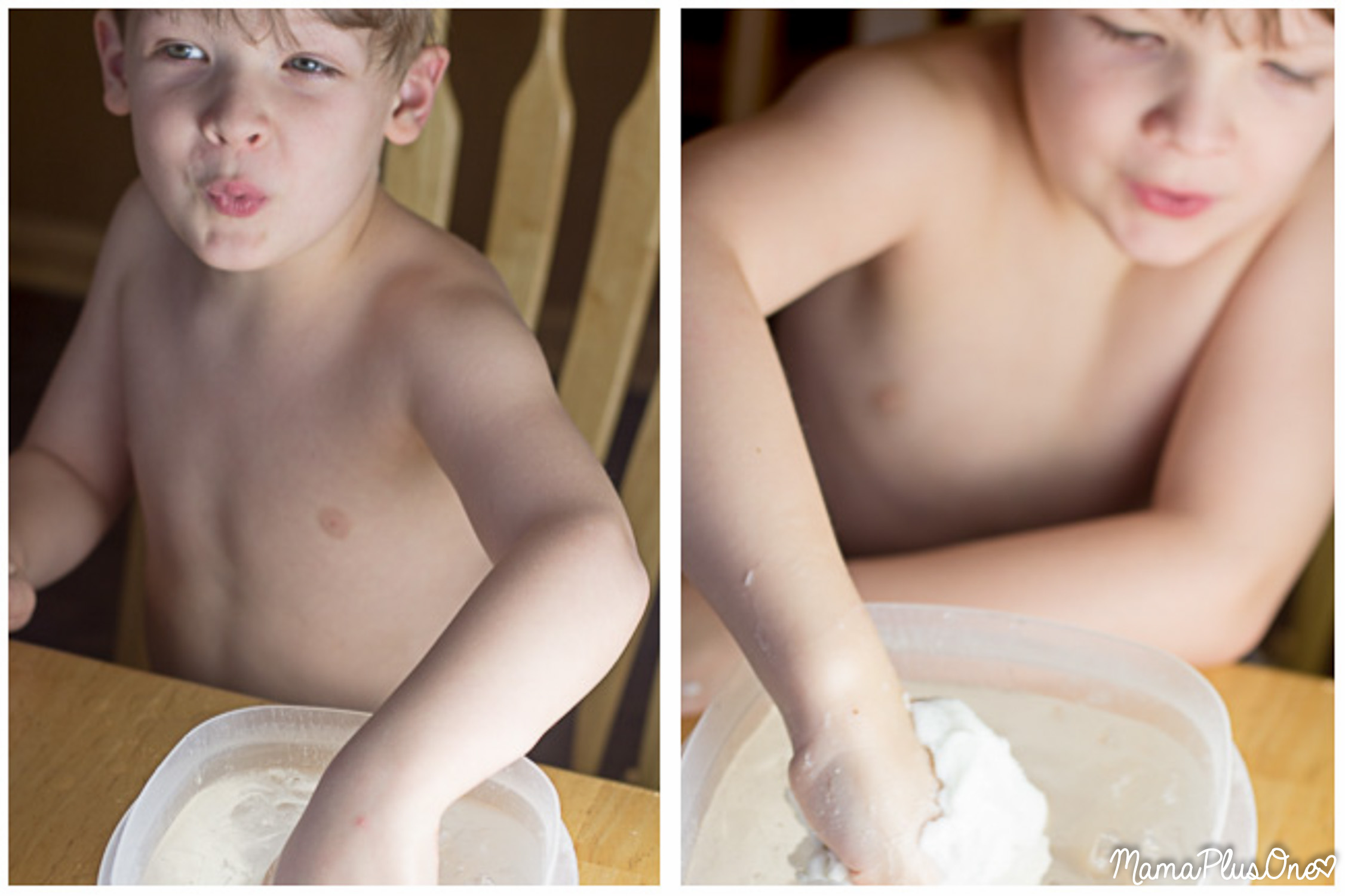
Our experiment (yes, he decided to do it shirtless so his clothes wouldn’t get wet) was all about the insulation factor of blubber. It’s so easy to re-create at home, and all you’ll need is shortening, ice, and water.
To do the experiment, you’ll start by having your child stick one of their hands in ice water bare. You can tell by the look on his face that the water is COLD! Don’t have them leave it in long– it isn’t worth risking frostbite or anything. Next, coat the other hand in a thick layer of shortening. You’ll want to be sure to really have it on thick. I had my kiddo make a fist and packed it on quite a bit.
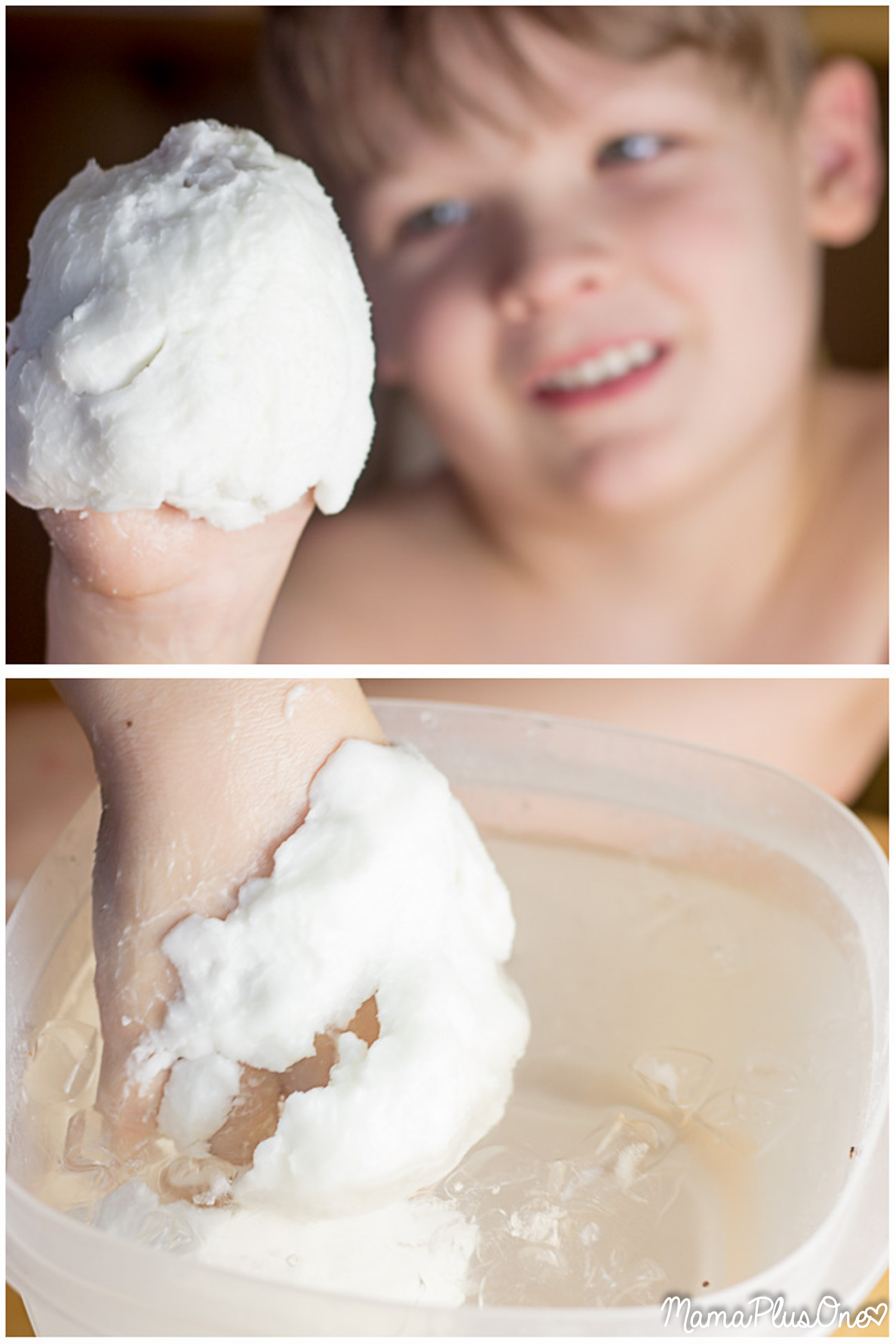
The hand with shortening will have insulation. When your child places their hand in the water, it simply won’t feel cold. This insulation isn’t exactly like blubber, which is a built-in fat. However, it’s similar enough that it will give them an idea of how blubber can keep an animal warmer.
Arctic Animal Exploration
If you want to dive even deeper into the study of arctic animals, there is a really fun experiment about measuring arctic animals over on Gift of Curiosity. It helps children really grasp the size of arctic animals and how they compare to other animals (and your kids!)
We also took some time to spend time in the arctic biome in Minecraft. I recently shared about how we use Minecraft in our homeschooling and education. When we are studying a new biome in the real world, we love to try to visit a similar biome in the game. It is interesting to see how the in-game biome compares to the real-world counterpart.
Finally, because Ungava is a tundra in the arctic area, we decided to do a really fun experiment about permafrost that can occur in that area. It’s an experiment that we tried with my brother not long after he started homeschooling, so it was really fun to repeat the project with my son now that he is an age where it’s relevant to what he’s learning. The experiment uses gelatin, dirt, and ice to show how ice doesn’t permeate into the ground fully, but only saturates the upper layers of dirt. It is definitely an interesting one to try with your kids!
If your local zoo has arctic animals, going and seeing them firsthand is a great idea! We didn’t get the opportunity to visit our zoo during the time we studied the book, but we cannot wait to visit it later!
Sea Salt and the Ocean
Because much of the book is set in a seabed underneath the ice, the smell of sea salt is a big part of the experience of gathering mussels. We decided to find out if we could smell the difference between salt water and tap water, and then we decided to do a fun experiment using sea salt to see if we could add enough salt to water to make an egg float! Salt is a large part of the reason that things are so buoyant in the ocean, and why the Dead Sea provides incredible flotation. It is a fun topic to discuss while you’re talking about the smell of sea salt and the ocean.
Levers
At one point in the book, Eva uses a lever, essentially, to pry mussels off of a surface. Levers are a great way to lift something stuck or very heavy and use way less force. We found a really fun experiment over on HomeschoolDen all about levers!
Sensory Play
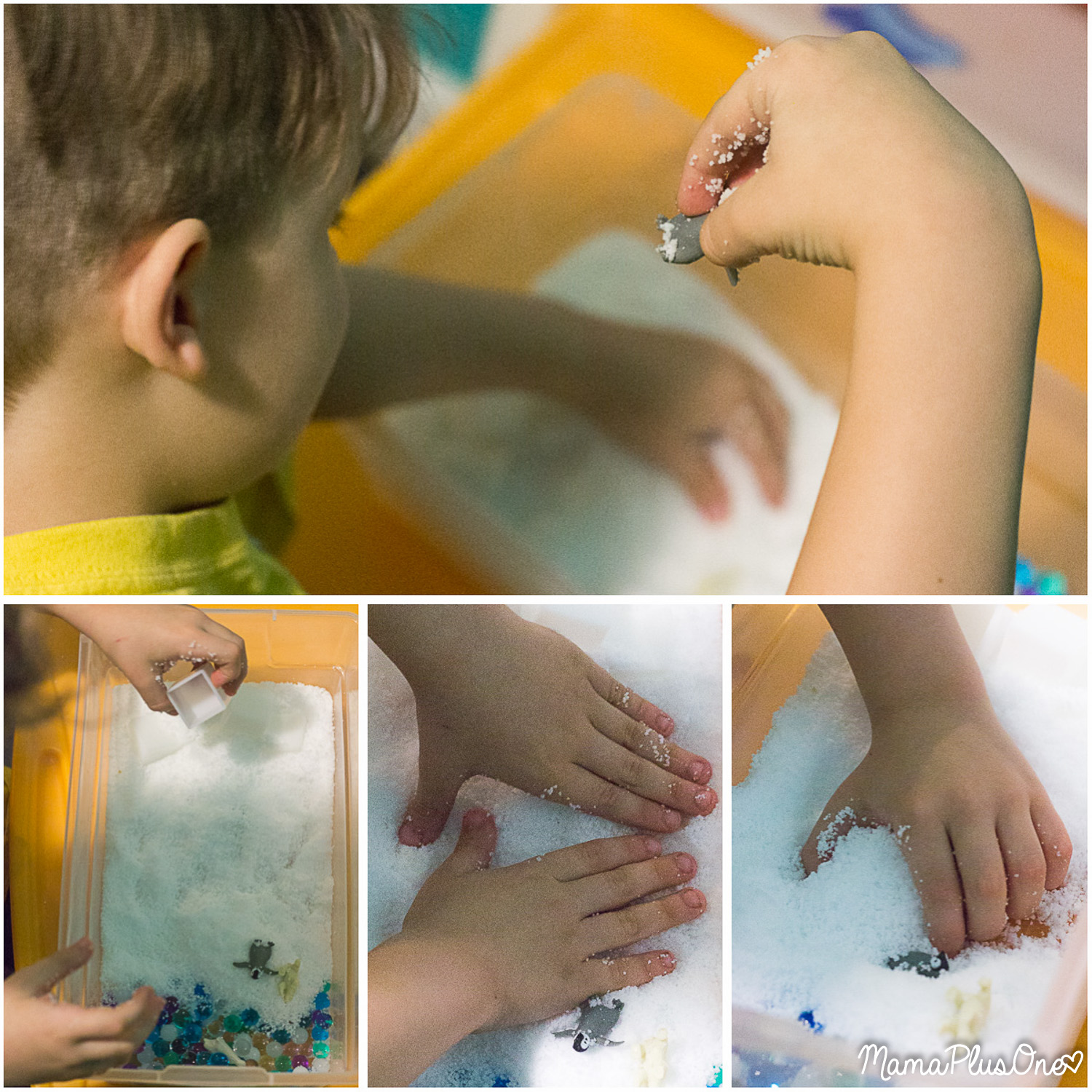
Each time we study a book, I love to add an element of sensory play if I can! For this unit, we decided to make a snowy sensory bin to play!
I found fun Instant Snow on Amazon— you just add water to a couple of small scoops of it, and it puffs up into a wonderfully snowy texture. It really does feel remarkably similar to snow, making it so fun to play with. I added a few ocean-colored water beads to one side of the snow mixture, giving it that “ocean stone” appearance, and included tiny arctic animals for my kiddo to find and hide under blocks from our Don’t Break the Ice game.
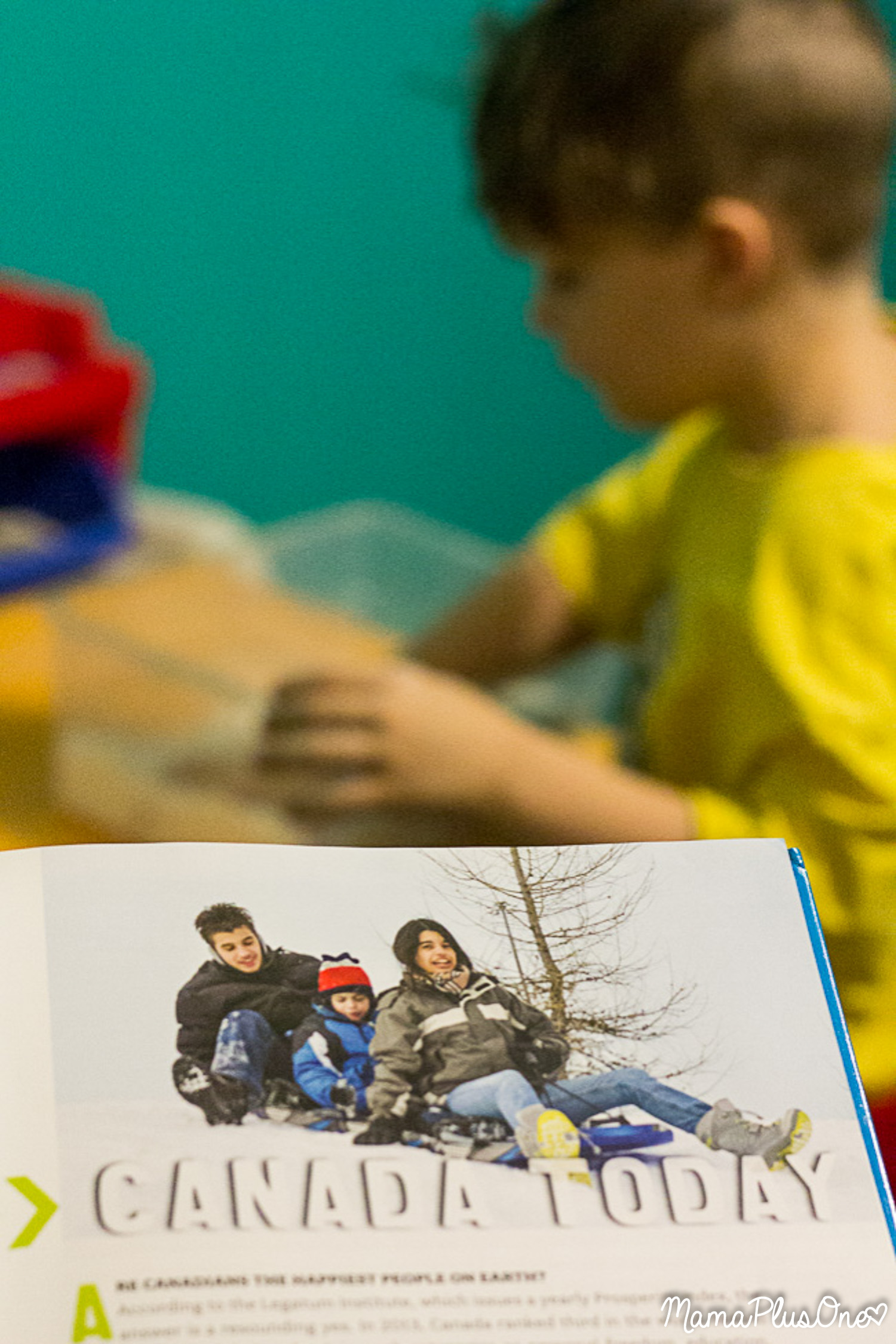
He had a lot of fun playing in and interacting with the sensory bin, and we love using sensory play as a tool for keeping hands busy for more active listening during reading time. For many books, he sits with me and reads along, but for longer texts or texts that are less likely to hold his attention, having something to keep his hands busy is very helpful to his comprehension.
Book Basket
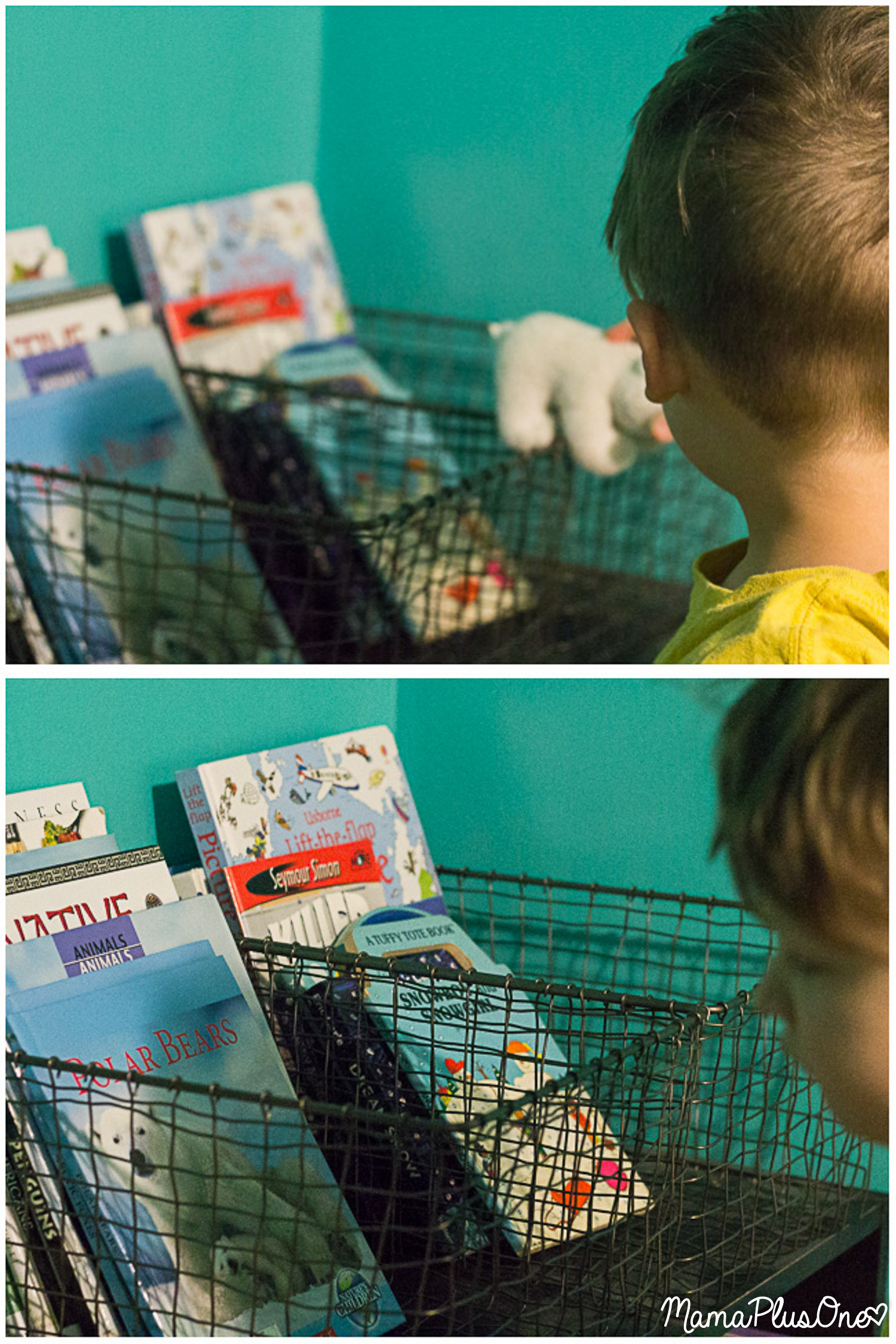
Each time we study a subject, we visit the library and choose some books from our home library, as well. We love to get a selection of books on the topics we’ll be covering, but we don’t feel pressure to actually read them all. It is our desire to have them here so we can read them if we’d like, or not read them if we’d not like. Each day, in addition to reading the book we are studying, we pick a book or two from the basket to read from. Here are the books that we decided to look at this week. I’ve noted next to them if they are fiction or non-fiction and tried to put them into coherent categories so you can easily find the book topics you might be interested in.
I would definitely encourage you to see what you can repurpose from your own shelves at home– we were surprised by the number of books we had on our shelves that fit the themes we were studying, like books about ocean life.
We incorporate books into our Very Last First Time activities and book basket that are as simple and easy-to-read as young board books and as complex as textbooks because there is value in reading a wide variety. It is nice to see my son tackle the board books by himself with little support from me, but it is also nice when we can look up specific information in the longer-format textbooks aimed at older grades.
Books about Arctic Animals
Arctic Foxes by Vic Franchino (this book is quite expensive online, as it is a longer textbook-type book, but if you can find it from your local library, it is a great addition).
Baby Penguins Everywhere by Melissa Guion (fictional board book).
Bears in the Snow by Shirley Parenteau (fictional board book)
Penguin in Peril by Helen Hancocks (silly fictional story about a zoo penguin being chased by hungry cats)
Penguins by Judith Jango-Cohen (factual textbook-type book)
Polar Bears by Tamra Orr (this book is also quite expensive online, being a longer textbook-type book. Check your local library!)
Penguin’s Big Surprise (formerly Pugwug and Little, fictional easy read that has a great message about sibling relationships) by Susie Jenkin-Pearce and Tina Macnaughton
Killer Whales by Seymour Simon
Books about Canada and its Geography and People
Cultures of the World: Canada by Guek-Chen Pang (this is very expensive online, and is a longer textbook-type book)
Usborne Lift-the-Flap Picture Atlas (this book only very briefly discusses Canada on its North American page but is a good resource to have on hand as you travel through your reading. Reach out to your local Usborne consultant to find a copy!)
Books about Inuit Culture
Native Americans: Discover The Culture of the First Americans with 15 Projects by Kim Kavin (this is a build-it-yourself handbook with ideas from many Native American tribes, but does include a specific Inuit project inside).
Books about Snow, Glaciers, and the Arctic
Dream Snow by Eric Carle (this is a short, dreamy fiction book about snow and a man who looks just like Father Christmas. It’s a very loose addition, but we enjoy books that are even very loosely connected to our theme book from time to time).
Books about the Ocean
Eyewitness Ocean by Miranda MacQuitty
Now I Know: What’s Under the Ocean? by Melvin and Gilda Berger
Deep Sea Dive by Salina Yoon (This is a fun, fictional lift-the-flap book that kids will love reading often!)
What Very Last First Time activities are you most interested in trying?
Let us know in the comments below! We had a blast studying the book. It was really exciting learning a lot more about how mussels are collected, and about the Inuit culture overall. There are so many other rabbit trails you could go down with this book. If you tried something I didn’t share, I would love for you to let me know in the comments down below!
Note: If you are looking at Rowing Very Last First Time as part of the Five in a Row curriculum, my suggested activities are not in any way a replacement for buying and using the curriculum. Think of these fun activities as a “dessert” to the meat-and-potatoes that is the FIAR curriculum.
More Homeschooling Resources
Where I Find Totally Free Apps for Our Homeschool
How We use Computers for Homeschooling
Organizing Homeschool Curriculum
More Books and Book-Based Studies and Activities
15 Tantalizing Summer Reads for Kids
Top 10 Can’t-Miss Books for Spring for Kids
This House Needs a Mouse: Review and Activity
If You Give a Mouse a Cookie: Activities for the Classic Book

